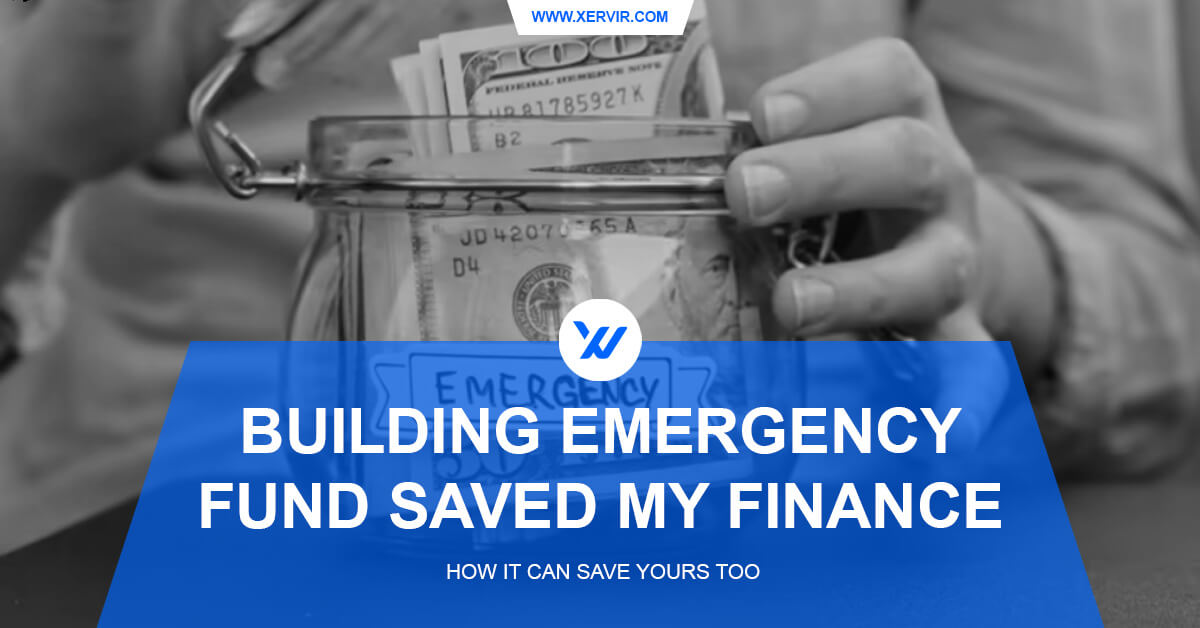The Day when My Life Turned Upside Down
It was a rainy Tuesday afternoon when my laptop decided to retire—permanently. As a freelance bloger, my laptop is my lifeline. No laptop meant no work, no income, and a looming sense of panic. I scrambled to check my bank account, only to find ₱1,000 staring back at me. That’s when it hit me: I had no emergency fund.
I spent the next week borrowing a friend’s old device, taking on extra gigs, and eating more Pancit canton noodles than I care to admit. It wasn’t just inconvenient—it was humbling. That experience became my wake-up call to prioritize financial safety. Today, I want to share my journey of building an emergency fund, the mistakes I made, and how you can avoid them. Let’s turn anxiety into action.
What Is an Emergency Fund? (And Why I Ignored It for Years)
An emergency fund is a stash of money set aside specifically for unexpected expenses—think job loss, medical bills, car repairs, or yes, even a laptop funeral. It’s not for vacations, Black Friday sales, or that cute coffee maker you’ve been eyeing.
For years, I dismissed the idea. “I’m young and healthy,” I’d say. “I’ll save later.” But life doesn’t care about your timeline. When my motorbike tires failed six months after the laptop incident, I realized: emergencies come in waves, not one-offs.
Why an Emergency Fund Isn’t Just “Nice to Have”
Here’s the hard truth: A study by the Bangko Sentral ng Pilipinas found that 63% of Filipino households do not have savings, indicating that a significant portion of the population relies on their income to meet daily expenses. Additionally, a survey revealed that 58% of Filipino millennials and 59% of Gen Zs live paycheck to paycheck and worry about covering their expenses, according to a mb.com.ph report. Without a financial buffer, a single crisis can spiral into debt, stress, and tough decisions (like choosing between a repair bill and groceries).
For me, the emergency fund became more than money—it was peace of mind. Knowing I had a safety net helped me sleep better, negotiate job opportunities without desperation, and even say “no” to a toxic client. It’s not dramatic to say it changed my relationship with money.
How Much Should YOU Save?
Most experts recommend 3–6 months of living expenses. But let’s be real: that number can feel overwhelming. When I started, I could barely save ₱500 a month. Here’s what worked for me:
- Start Small, But Start Now: I began with a ₱15,000 goal. It took five months, but hitting that first milestone kept me motivated.
- Tailor It to Your Life: Are you a single freelancer (like me) or a parent of three? My risk tolerance is higher, but I still aim for 4 months’ expenses after a health scare last year.
- Adjust as You Go: When I paid off my student loans, I redirected that payment into my emergency fund.
Example: My monthly expenses = 2,500.Mycurrentgoal=2,500.Mycurrentgoal=10,000 (4 months). Yours might look different!
Where to Keep Your Emergency Fund: My Trial-and-Error Journey
At first, I kept my fund in my checking account. Big mistake. Out of sight, out of mind—until I dipped into it for a “quick” Lazada purchase. Here’s what I learned:
- High-Yield Savings Account (HYSA): My go-to now. It’s FDIC-insured, earns ~4% interest, and takes 2–3 days to transfer. That minor delay stops impulse spending.
- Avoid Risky Investments: I tried stashing ₱1,000 in stocks—terrible idea. When the market dipped, so did my “safety net.”
- Separate Accounts: I use a dedicated HYSA labeled “DO NOT TOUCH” at an online bank. No debit card, no temptation.
Building Your Fund: The Strategies That Worked for Me
Saving thousands feels daunting, but here’s how I broke it down:
- Automate It
I set up a 75 weekly auto transfer. Overayear, that’s 75 weekly auto−transfer. Overayear ,that’s 3,900 — painless and consistent. - Side Hustles
I sold old textbooks, took on SEO writing gigs, and even dog-sat. Every extra money went into the fund. - The “No-Spend” Challenge
For 30 days, I cut non-essentials (goodbye, daily lattes). Saved ₱220. - Windfalls
Tax refunds, birthday money, bonuses—I funneled 50% into the fund. - Trim Fixed Expenses
Negotiated my phone bill, switched to a cheaper gym, and saved ₱200/month.
Common Mistakes I Made (So You Don’t Have To)
- Overcomplicating It: I spent weeks researching accounts instead of saving. Just. Start.
- Using It for Non-Emergencies: That “emergency” concert ticket? Not. Worth. It.
- Forgetting to Replenish: After a ₱3,200 car repair, I ignored refilling the fund for months. Don’t be like me.
When to Use Your Emergency Fund: My Rules
I ask myself three questions:
- Is this unexpected?
- Is this urgent?
- Is this necessary?
Example:
- Yes: ER visit, broken fridge, sudden job loss.
- No: Holiday shopping, “50% off” sales, routine oil changes.
The Emotional Win: How This Fund Changed My Life
Beyond the financial perks, my emergency fund gave me confidence. I left a dead-end job because I had runway. I said “yes” to a friend’s destination wedding because I had backup savings. It’s not just about surviving—it’s about thriving.
Your Turn: Let’s Build Your Safety Net Together
Here’s my challenge to you:
- Open a HYSA today—even with ₱100.
- Set a micro-goal (e.g., ₱500 by next month).
- Share your progress with a friend—accountability works.
Remember, I started with Pancit canton noodles and regret. You don’t have to.
Final Thoughts: Embrace the Journey
Building my emergency fund wasn’t linear. There were setbacks, temptations, and moments of doubt. But every dollar saved was a step toward freedom. You don’t need perfection—just persistence.
So, what’s your first step? Let’s chat in the comments!

